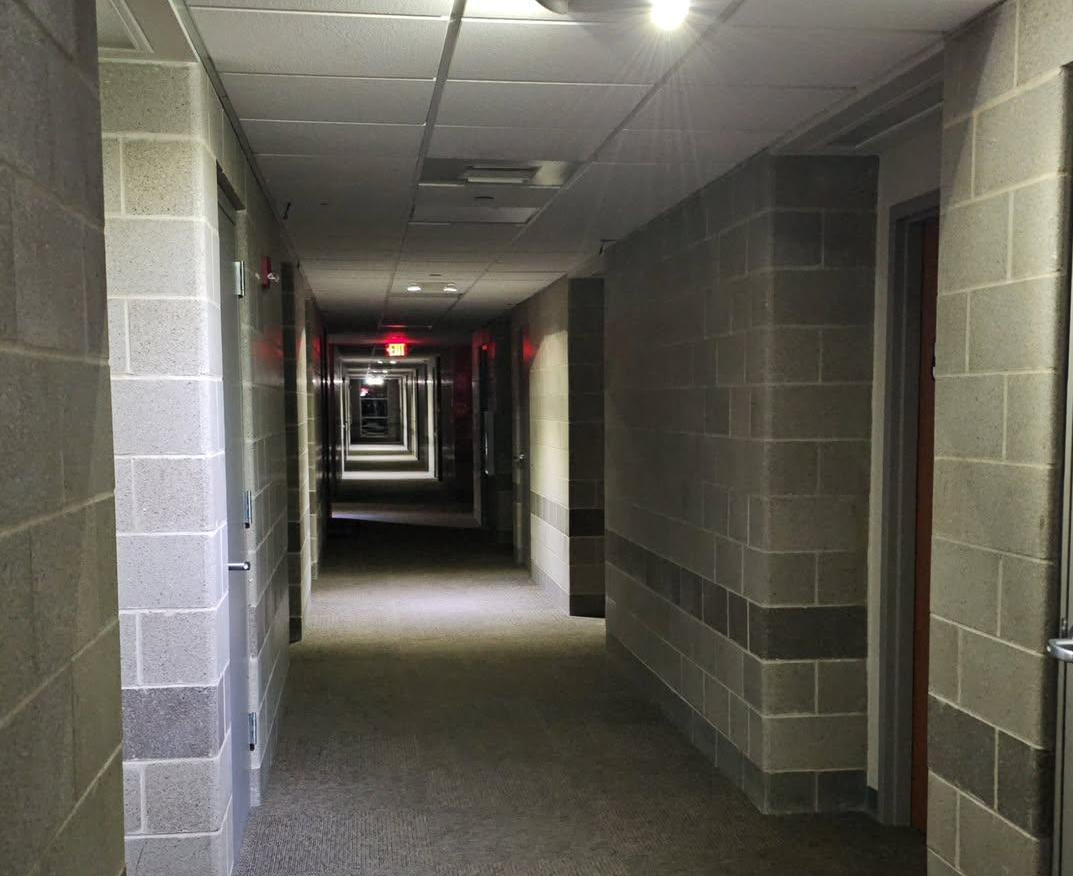Jonathan Davies | Opinions Editor
January 28, 2015; : p.m.
This winter has yet to deliver a snowfall similar to what brought the main campus to a standstill last year on the first day of class during January term.
Director of Grounds Kyle Routh said he doesn’t want to trap cars in with his plow, but if this winter decides to replicate anything of last season, he may not have much of a choice. However, that hasn’t stopped the Lindenwood Grounds team from being just as prepared as ever.
Routh has already got his crew ready for this year’s weather. “We have a six full time employees. We split into two crews, so three people per crew working twelve hour shifts. The first crew gets all the equipment ready; puts the plows on, salters on, make sure everything is full and then the second crew starts dealing with the snow.”
He continued “So at any time we have three full time employees working, three resting and they just rotate until it’s over.”
He predicts that the end of January and mainly February will be when most of the heavy snow is likely to fall.
Salt prices have fluctuated similar to that of oil over the last three years, steadily increasing from $34.50 per ton to just over double that at $76.58 per ton.
Routh isn’t fazed though, “No, I’ll buy what I think the school needs in the fall and it’s all stored in South County.” He explained “I have a bin out here that holds about thirty tones of salt and if it gets low I’ll call up and get more brought in.”
Routh said when the temperature really drops is when the biggest problem occurs. “Well, the rock salt works best around 20’F. Anything colder means it won’t melt, just refreeze and then the salt stock pile depletes quicker.”
Routh spoke of how the hardest parts of campus to clean are the parking lots with the parked cars in them. “This is because we can’t plow underneath the cars and so we can go down the middle and that’s it.”
He added “most of the problems we have at LU are people not knowing how to drive in the snow. Students get to a hill, gun it, spin out and get stuck. Then the car behind gets stuck and you are left with a big mess we have to come sort out. It’s usually someone with little experienced of driving in the snow or a mustang with bald tires and more horsepower than they need.”
Routh had some suggestions for students but ultimately what they get up to on campus isn’t a concern for his team. “If the guys and girls would stay of the roads and just let us finish them first but that never happens. Normally if we get a big snowfall and they cancel classes, everybody wants to go out and take a look. You know… go in the parking lot, do donuts.”
He joked “Well it doesn’t hurt anything. If I haven’t plowed it yet, it’s a security issue not a grounds issue. If they run into a pole or whatever it’s on them.”
His main complaint that his team receives during the winter comes from the student drivers in the flowers parking lot. “When we come through with the plow and clear the snow, we can only go left or we can only go right. As a result some cars are going to get snow piled behind where they’re parked so we try to leave three or four feet. Once we’ve cleared the roads and sidewalks we can come back with the tractor and move the piled up snow away from the parked cars.”
He recommended people just go slow and steady but not to let out any air from their tires.
Director of Public Safety and Head of Lindenwood Campus Security; John Bowman also gave some of his own advice on what to do in preparation for potentially hazardous weather. “Always use caution. Listen to the winter/road advisories if any are out. If you don’t have to travel, don’t travel. Drive below the speed limit. Drive for the conditions.”
He advised “For safety concerns you may want to add some salt, a shovel or at least a blanket in your vehicle just in case you end up off the road. You may be able to dig your way out or throw some salt down and give yourself some traction. Also, use the hand rail when walking down the steps.”
Bowman also warned about the dangers of going out sledding, doing donuts and driving in general. “Just remember if there’s some snow on top there could be some ice below. Be cautious because it does get slippery especially if it warms up during the day then refreezes at night. Use caution when driving through the parking lot or through campus because we have the snow plows out there but also we have the students out there snowboarding or sledding so just use common sense.”
Bowman says the security team don’t add any extra staff in preparation for winter but they do help out the grounds team if they’re falling behind. “If they need some salt thrown out in front of the buildings we’ll go ahead and help them. We’re not really prepared as we only have one four wheel drive vehicle and that gets used all the time in the winter time. Just because we have to be able to respond to calls sometimes that’s all we’ll have going because last year was pretty treacherous. We were running one vehicle as the other vehicles were unable to get around in the weather.”
Student driver Micaiah Skolnick has had plenty of experience in the snowy conditions both back home in Lancaster, Pennsylvania and commuting the sixteen hour drive down to Lindenwood in last year’s snow storm. He had some tips he wanted to share with his fellow students.
1. “If you start sliding, never over react. Don’t wrench the wheel to one side, don’t slam on the breaks. Think about which direction the car is going and steer toward that direction until you have control and then very slowly steer out of it as obviously you have barely any friction.”
2. “Never slam on the breaks to lock up your wheels, that will never work and that’s the least amount of traction you have when you’re sliding. Instead pump the brakes if you need to slow down.”
3. “Check your tires. You don’t want bald tires as that will again provide no grip whatsoever so it’s best to get them looked at before the bad weather arrives.”
4. “If you’re stuck in snow some good ways to get out are turning the wheels in different directions and backing up as far as you can then try going forward.”
5. “If you are near a house you can bring out ashes from a stove as that will melt the snow/ice a lot quicker than salt or use a board, back up onto it then try driving off.”









